Cancer Research UK Annual Review 2011/12
Cancer Research UK Annual Review 2011/12
Cancer Research UK Annual Review 2011/12
You also want an ePaper? Increase the reach of your titles
YUMPU automatically turns print PDFs into web optimized ePapers that Google loves.
<strong>Annual</strong> <strong>Review</strong> <strong>2011</strong>/<strong>12</strong> | 9<br />
They also investigated how primary tumours relate<br />
to secondary ones – the primary tumour is where<br />
the cancer started; a secondary tumour is where it<br />
has spread to.<br />
The scientists revealed that no two samples were<br />
identical – even those taken from right next to<br />
each other in the original tumour. This discovery<br />
showed how cancer changes and adapts as it grows<br />
and spreads. These results help explain why it’s<br />
difficult to predict which treatment will work, and<br />
why some treatments become less effective later<br />
on as the patient’s disease changes.<br />
‘One way of looking at it is to see the tumour as<br />
a tree,’ says Professor Swanton. ‘You have genetic<br />
faults that are in the trunk and present in every<br />
part of the tumour. Then you have the faults in<br />
the branches that may differ from one part of the<br />
tumour to the next.’<br />
‘Identifying these widespread faults is key to<br />
improving treatments. This is because an increasing<br />
number of cancer drugs work by targeting genetic<br />
faults. If you target one that’s present in one part of<br />
the tumour and not the other, the treatment won’t<br />
be as effective.<br />
The next stage is to identify which faults inside each<br />
tumour are driving the disease, as this will improve<br />
the success of these tailored treatments.’<br />
cancerresearchuk.org




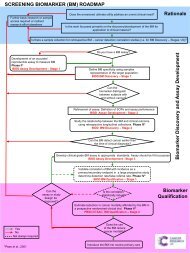


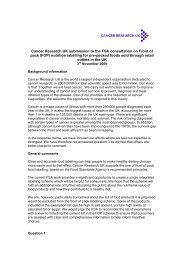
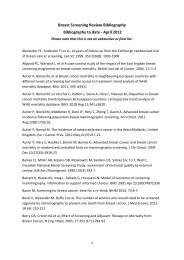
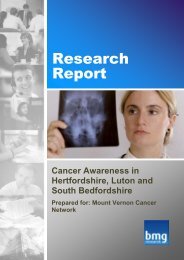



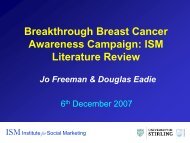
![[PDF] Cancer Research UK's strategy 2009 - 2014](https://img.yumpu.com/29239422/1/184x260/pdf-cancer-research-uks-strategy-2009-2014.jpg?quality=85)

